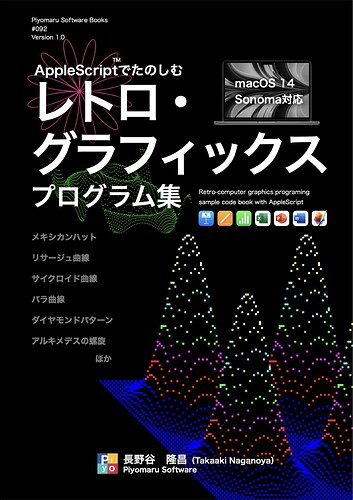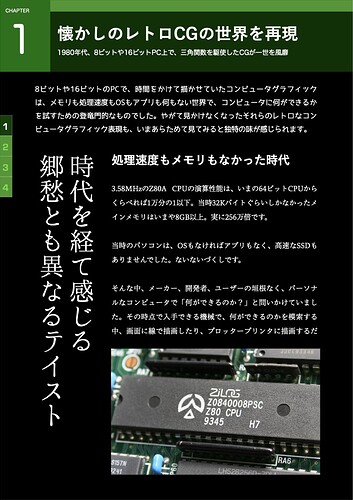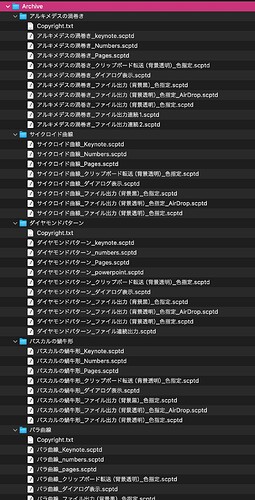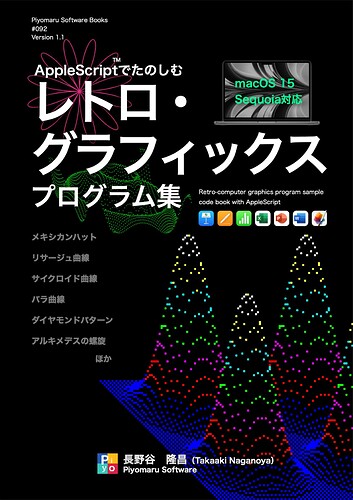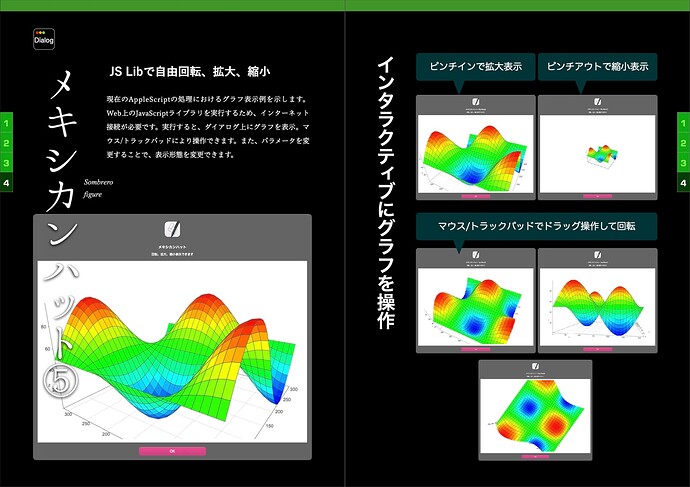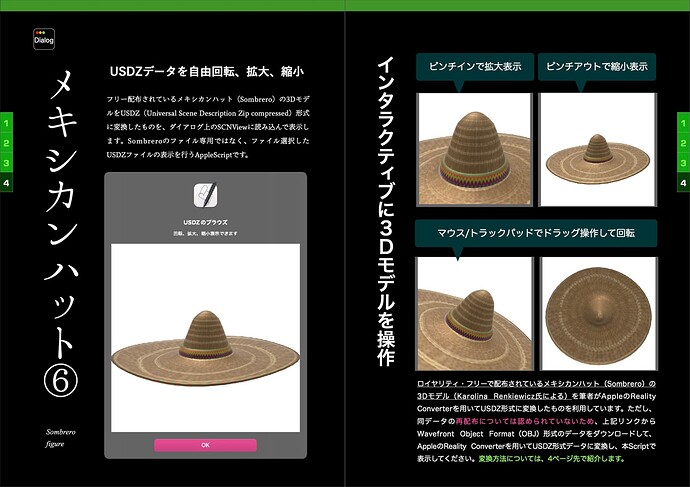I wrote a new e-book about retro-style CG with AppleScript. PDF 145 pages (In Japanese).
https://piyomarusoft.booth.pm/items/6054082
This book has been edited with the intention of running the sample script by explaining the execution of the attached sample script, the principle of operation, and the overall positioning without providing a difficult explanation.
A long time ago, in the early days of 8-bit PCs in the 1980s, graphic display of line drawings using trigonometric functions was widely used in advertising photos and demo screens. These were “painstaking measures” to somehow manage and achieve a “flashy” appearance within the poor CPU power and memory capacity at the time.
Forty years have passed since then. The unique and impressive line art graphics of these periods are called “retro graphics,” and I wanted to reevaluate their taste and enjoy it. However, the only people who continue to maintain the environment at that time are the ladies and gentlemen who are experts in hardware who are familiar with machines enough to repair and replace parts that have deteriorated over time.
Therefore, we have reproduced the operation of BASIC programs at that time in AppleScript, a Mac scripting language, and included them as an appendix to this book so that you can enjoy the combination of the latest Apple Silicon Macs and the latest macOS. In addition, it includes “fun” examples such as not just drawing and displaying graphics, but also exporting to images, exporting to PNG images with a transparent background, setting images to the clipboard, and interacting with other applications to display them.
By all means, please actually move it and enjoy it!
Table Of Conents:
Chapter 1 The World of Retro Graphics
Recreating the nostalgic retro CG world
A taste that is different from the nostalgia that you feel through the ages
A long time ago, I drew a trigonometric graph over a dozen minutes
Finish in less than 1 second vs finish in 6 minutes
Porting BASIC programs to AppleScript running in the latest environment
Apple Script is an environment that distinguishes elements by color, which requires syntax coloring
Graphics with AppleScript with minimal knowledge
Libraries required for execution are included in AppleScript documents
Built-in function of the author’s function calculation library “calcLibAS”
Column: Pocket computers emulator “pockemul”
Chapter 2 A quick introduction to the world of AppleScript
Languages that have been adopted since 1994
Present to operate GUI apps. There are a lot of installed execution environments.
For how to write it, refer to the glossary that exists in the app.
In order to use the original function, it is necessary to allow it in the system settings.
Interpreted languages that can now call Cocoa directly since 10.10
Is the forced operation function that directly manipulates GUI parts to operate the application popular?
Call APIs on the web and use cloud-based functions
Library function to describe reserved words and functions in the AS itself
Column: The Big Picture of the World of AppleScript, from the deepest parts of the OS functions to the operation of the GUI itself
Chapter 3 Working with graphics in AppleScript
Calling Cocoa functions to create images in memory
Create an NSImageView on top of NSAlert and display it graphically
Cocoa Graphics Coordinate System"
Coordinate systems for major applications"
Exporting it to an image file"
Copy and paste to other apps"
Transparent images that didn’t exist at the time"
Changing the parameters changes the behavior"
Column: Differences in response speed for each GUI application
Chapter 4 Retro Graphics Program Collection
Just open it in the Script Editor and run it
All required libraries are stored in a bundle
The listing is only for parts related to graphics rendering.
How to use/Dialog DisplayAppleScript
How to use/File OutputAppleScript
How to use/File Output + AirDrop AppleScript
How to use/Clipboard TransferAppleScript
How to use/Various GUI app operationsAppleScript
13 OS out-of-the-box execution environments and dozens of third-party execution environments
Line drawing test
Circle drawing test #1
Circle drawing test #2
Cycloid curve
Rose curve
Pascal’s cochlea
Lissajous curve
Diamond pattern
Archimedes’ spiral
Mexican hat #1
Mexican hat #2
Mexican hat #3
Mexican hat #4
Column Differences in execution speed between machines
